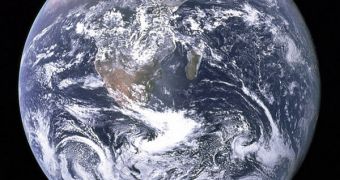Scientists from a NASA lab say that the earthquake which struck Japan on March 11 was powerful enough to shift the entire planetary axis by a small amount. It may have also shortened days, they add.
The tremor, which occurred on Friday, had a magnitude of 8.9, and was widely felt in the country. It affected numerous buildings, and produced important damage to infrastructure such as roads, harbors, nuclear power plant, power grids, and so on.
Though smaller than the February 2010, 9.1-magnitude tremor that struck Chile, the new event was about 1,000 times more powerful than the New Zealand earthquake that took place about a month ago.
All the shaking, together with the ensuing fault line rupture, shifted Earth's mass in such a way that the planet's spin accelerated. This resulted in a shortening of the average day span by 1.8 microseconds.
The new analysis was carried out by experts at the NASA Jet Propulsion Laboratory (JPL) in Pasadena, California, who were led by geophysicist Richard Gross.
Based on preliminary data secured after the tremor, the expert and his team initially calculated that the average day had been shortened by 1.5 microseconds. The calculations were refined as new, better information became available.
The team reveals that the amount of speed the planet catches up after such geological event is dependent on how close the mass shift is to the equator. During the March 11 tremor, the mass shift was not that close to this location, hence the change was not very large.
“By changing the distribution of the Earth's mass, the Japanese earthquake should have caused the Earth to rotate a bit faster, shortening the length of the day by about 1.8 microseconds,” Gross says.
He adds that he and his team will continue to monitor the situation, and refine calculations ever further, as soon as new data of the earthquake and its consequences become available, Space reports.
The JPL expert says that Earth's axis was shifted by about 6 and a half inches (17 centimeters). At the same time, the entire island chain of Japan was shifted about 8 feet (2.4 meters), adds US Geological Suvery (USGS) expert Kenneth Hudnut.
“This shift in the position of the figure axis will cause the Earth to wobble a bit differently as it rotates, but will not cause a shift of the Earth's axis in space – only external forces like the gravitational attraction of the sun, moon, and planets can do that,” Gross explains.
“In theory, anything that redistributes the Earth's mass will change the Earth's rotation. So in principle the smaller aftershocks will also have an effect on the Earth's rotation,” the expert adds.
“But since the aftershocks are smaller their effect will also be smaller,” Gross goes on to say.
Experts have now calculated that the earthquake was the largest ever to hit Japan, and also that it was the 5th largest tremor in the world for the past 110 years or so. It was followed by 20+ aftershocks of magnitude 6 or higher.

 14 DAY TRIAL //
14 DAY TRIAL //